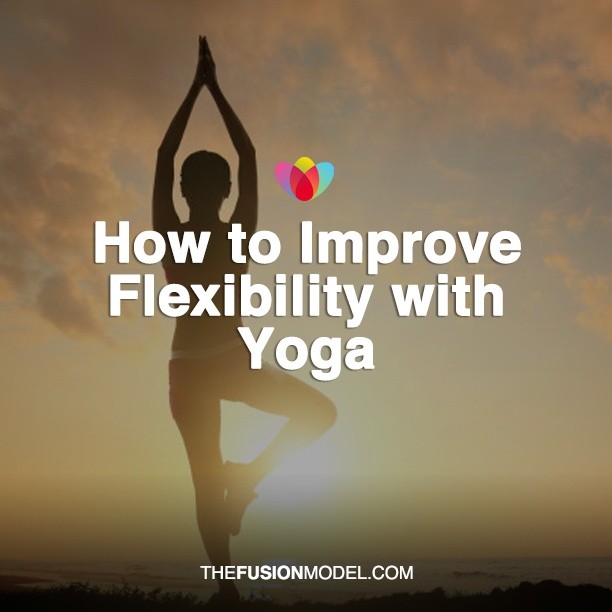Are flexible people born, or can anyone get more Gumby-like if they try? It’s certainly a question anyone who’s sat on a yoga mat next to a human pretzel has pondered. The good news is that anyone can improve their flexibility, and it’s important to do so, since it’s a key component of health and fitness.
“Stretching is vital for athletes,” says certified stretch and conditioning specialist Michele Olson, professor of exercise physiology at Auburn University, Montgomery. “It’s vital for all of us.”
But you needn’t be an Olympic athlete or devoted yogini to make strides in flexibility. “It’s actually one of the easiest things to improve,” Olson says. “I’ve had students who were not athletes, and we did flexibility testing on them, and they came back and said, ‘Oh my gosh, I was three inches away from touching my toes, and now I can reach them!'”
Of course, for get-it-done gym-goers, stretching may seem like a waste of time. But on a basic level, stretching provides you with greater freedom of movement — whether you want to jump hurdles or just mow the lawn. In the here and now, it helps overall maneuverability, but as you age, being flexible has added benefits that can help prevent creakiness from creeping up on us.
“As we age, our cartilage starts to thin out,” explains Olson. “It also doesn’t absorb blood as well, and that’s what makes our joints a little more painful and stiff.” But, she says, there’s an important relationship between touching your toes today and being able to straighten up down the road. “Decreases in flexibility are correlated to changes in your joints and diseases like osteoarthritis,” she says.
Stretching alone won’t keep you limber, but it’s one important factor in your overall approach to fitness. “That’s why the American College of Sports Medicine really recommends that as you age, you keep up your cardio activity,” says Olson. “Be sure to do some resistance training to combat the loss of muscle as you age, and engage in some sort of stretching regimen at least two days a week.”
That can take the form of stretching for 10 to 15 minutes on your own in your living room, or taking a formal Pilates or yoga class (since those are both activities designed to make us more pretzel-like). But you can start right where you are. Just get on the nearest patch of floor and extend your legs. Here’s where to go from there:
Good
Try your hand (or hamstrings, as it were) at what professionals call a “baseline flexibility test.” Lean forward, and with your legs straight in front of you, see how far you can reach. This is (logically) called the “sit and reach” test, and if you were doing it for real, you’d be awarded a score, much like an Olympic figure skater. “If you can touch your toes, you get a zero,” says Olson. “If you can reach beyond your toes by two inches, it would be plus two, and so on.”
Somewhere in that range, fairly close to touching your toes, is what you’re aiming for. “Generally speaking, if you fall really short of that, you probably are stiffer in your spine, in your lower back and in your hamstrings,” says Olson. The idea is to reach and repeat until the process gets easier.
If you can barely reach past your knees and feel like a flexibility failure, you might want to hit the spa. “Massage therapy isn’t just some sort of kooky, funky thing with candles,” says Olson. “It can be very helpful in improving muscles and helping the circulation since it pushes blood into different areas. If you have a sort of knotty area… massage can push that out and give you a greater range of motion.”
Better
This is where self-induced loosening up begins. Try this set of exercises (which should take no more than 15 minutes) three times a week:
Seated Saddle Stretch: Sitting on the floor, open your legs in a small V-shape, then stretch forward and reach toward the toes on your right foot. Do that five to 10 times for a slow count to 10, and do the same on your left side. It’s a great stretch for your hamstrings and lower back. Make sure not to bounce or use momentum when performing this stretch. Each movement should be slow and deliberate.
Extended Reach: Lying on your back, bend both knees as if you were going to do a sit-up. Take your right leg and push it up toward the ceiling. Then wrap a towel around the bottom of your foot, push your foot into the towel and try to straighten your leg. Do that on each leg, for a slow count of 10. “That’s another good stretch for your hamstrings, and it [works] your calf muscles,” says Olson.
Child’s Pose: Flip over. While on your knees, extend out over them like a Child’s Pose in yoga to isolate your spine and loosen up your neck. “If you reach your arms up and out, that would add a stretch to your shoulder area and upper back,” says Olson.
Cobra Pose: “Straighten out on your stomach and pull your hands up under your shoulders,” says Olson. Now, slowly peel your upper body off the floor while leaving your hips in contact with the floor. You should feel this stretch in your stomach and in the muscles in front of your hips. You may not initially be able to perform a perfect full-on Cobra, but if you stick with it, eventually you’ll see — and feel — an increased range of motion.
Best
If you’re a seasoned athlete who could use a little boost in the flexibility department, it’s time to embrace “dynamic” stretching — moves that address the muscles in a continuous motion to get the blood flowing and your heart rate jumping. It’s what experts like Olson call “dynamic range movement,” as opposed to the examples of static stretching above.
Say you’re a runner going out for a brisk walk. March before you start exercising, lifting your knees to warm up your quads and hip flexors. “It’s also going to stretch out your hamstring every time you lift your knee,” says Olson. Add walking lunges and arm circles, since you want your shoulders to be relaxed. An example of a dynamic routine is marching 20 strides, lunging 20 strides and repeating that series three or four times until you start to break a sweat — a sign you’re all warmed up. “You’ve increased your core temperature, and you’re feeding your tendons and ligaments blood and nutrients,” says Olson. In other words, your whole system is totally good to go.




